I’m more convinced than ever that living in a community is made for me. And also for other people who might not know it yet…
In the two previous articles of this series, i explored the different reasons to choose community living. Here to choose your tribe, and there to be richer. I have the intuition that these human settlements, also called « intentional communities », have huge potential for the future. For obvious social purposes, but also ecological and economical.
The Foundation for Intentional Community define them as : « A group of people who have chosen to work together in pursuit of a common ideal or vision. Most, though not all, share land or housing. Intentional communities come in all shapes and sizes, and display amazing diversity in their common values, which may be social, economic, spiritual, political, and/or ecological. Some are rural, some urban. »
Another reason in my opinion for living within a community is to know yourself better. When we open up to sharing our daily lives with people who are neither our spouses, nor our children, nor our parents, we explore new facets of our emotional and relational intelligence.
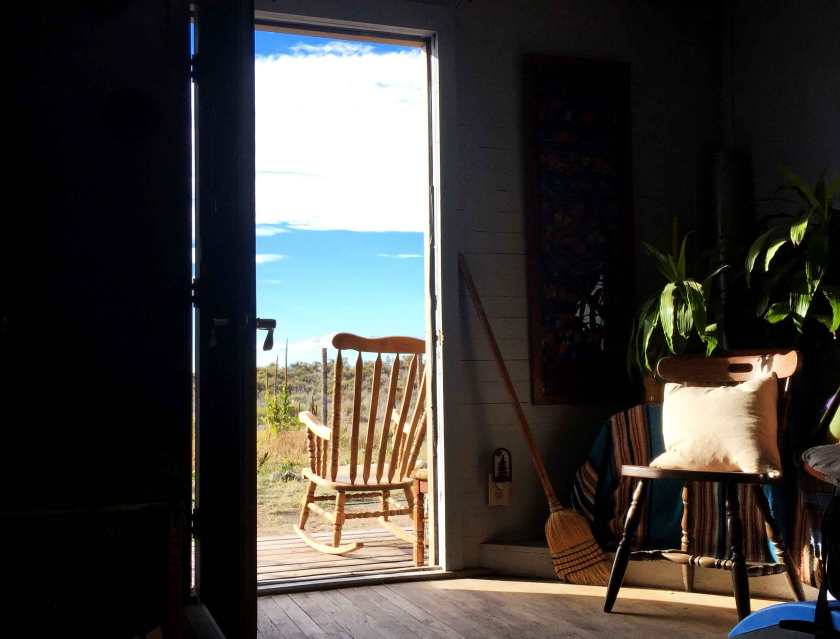 Dreamweaver Sanctuary, Crestone, Colorado
Dreamweaver Sanctuary, Crestone, Colorado
3 – Know yourself better
YOU – Group life is a prism that I find fascinating to explore the different dimensions of our relationship with ourselves and with others. It allows me to put my personality into perspective and to confront my ego with the diversity of others. Sharing daily tasks with people forces me to see myself, and to reflect on generosity, tolerance and kindness. I also become more aware of my own energy, and how it impacts the group.
Each person has his own ways, rules and ideas on how things are to be done. Living together as a group reveals those habits and invite us to decide whether they really matter or not. Conflicts can easily arise between people on subjects as silly as putting away the dishes or taking off shoes. But those tensions can teach us to see more clearly some of our intimate patterns.
In order to prevent such conflicts, many communities use non-violent communication (NVC) techniques. Labeled rather poorly, this technique is about conscious communication more than anger management. The key is to distinguish 4 components :
- First, you observe the fact,
- then you express your feelings,
- then you say what you need,
- finally you make a request for a specific action.
Exemple : « You haven’t washed the dishes you just used. It makes me angry because I see it as a lack of respect for the other people who share the space with you. I need to see that you are doing your part of what’s needed to be done. Could you clean and put your dishes away after using them? » Of course, this only works if both people are being honest and empathetic.
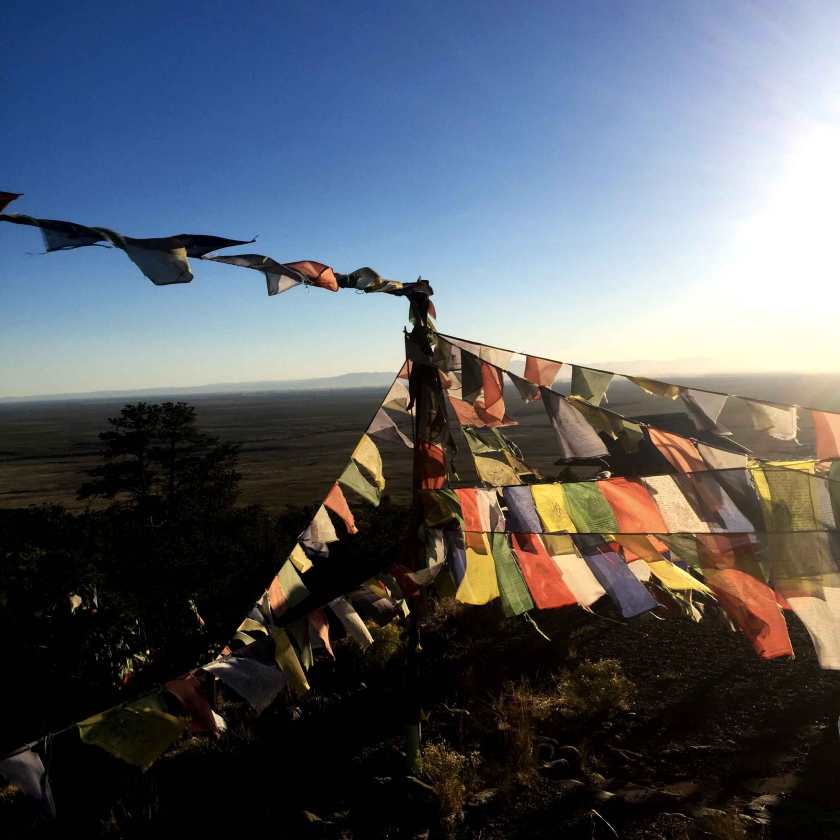 Tibetan flags on Crestone’s hills, Colorado
Tibetan flags on Crestone’s hills, Colorado
THE COUPLE – If we really want to change our system and our lifestyles, we have to question our current contemporary family standards (mom, dad, kids). This social norm has been imposed by capitalism and consumption society to divide customers and to sell even more. The question is how can we free ourselves from preexisting patterns and build the genuine family life we truly want and deserve ?
I have always wondered why couples had to live isolated. And why cook for the same person every night ? After all, Brandon and I met in a community of biologists and volunteers working with sea turtles conservation in Cabuyal <3. We were 12 people living in a remote camp. We shared meals, rooms, patrols and jokes all together. And that’s how i envision our future life as a family: in a joyful lively group of people from all generations and cultures.
Living with other people is an opportunity to talk about broader subjects on a daily basis, and to learn from others’ point of view. It also motivates us to express ours. Living with other couples, cooking with other people, seeing how other parents deal with their own child and acknowledging other people aging widen the horizon of references that usually comes from our parents, our education and our family. I also feel that in a community, relationships between men and women are more equal and balanced. It’s easier to exchange roles when the chores are equally shared and cared for.
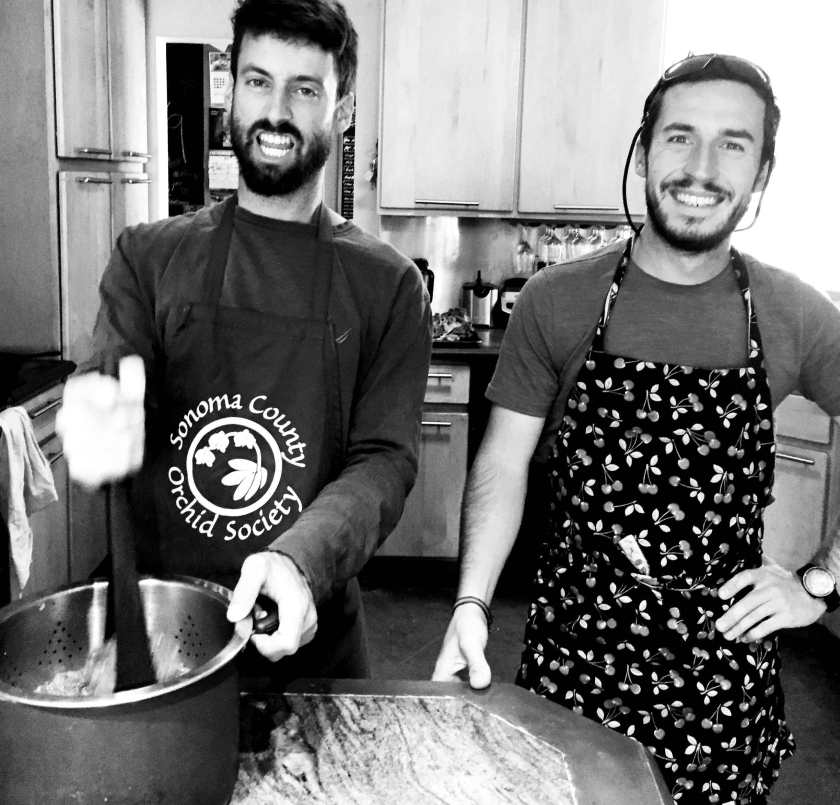 Brandon and Benoît making jam in the community kitchen at The Lavra, California
Brandon and Benoît making jam in the community kitchen at The Lavra, California
Living as a couple, in a flat or a house, clearly limits contacts with the exterior. Psychotherapist Esther Perel, who specializes in « erotic intelligence », compares this situation to « captivity » in her book « Mating in Captivity ». When we isolate ourselves and retreat in our couple, we tend to expect way too much from our lover / partner. This usually doesn’t help the couple’s balance and health. In a community, there is a lot of other people to meet and share activities with. We can go with one to an event, and watch a series with another one, freeing our partner from the burden of our wants.
THE CHILDREN – Community life dissolves the nuclear family into a broader tribe. When you live with other parents, you learn and reflect on your own way of parenting. It also provides you with a network of people who can help each other, pooling baby-sitter or talking about parents’ subjects.
For kids, it’s a great way to make many friends of different ages, and to be able to play within a group.Children also develop more relationships with adults than in a traditional family. In a community, whether you are a parent yourself or not, you live with children and help them. There will always be someone to teach them something or to answer their numerous questions and give them new perspectives on the world.
The famous African saying « It takes a village to raise a child » has different translations among tribes: « A child does not grow up only in a single home », « A child belongs not to one parent or home », or « The child’s upbringing belongs to the community ».

« The Hopi Indians, their history and their culture » by Harry James, illustrations by Don Perceval
I have no children yet, but i know that i want to have them within a community. I think that living with other people’s kids, and caring for them, might invite some person (who can or cannot have children) to question their desire and need to have one of their own.
« You white people only love the children from your body, we love all the children of the tribe » In the Netflix series Explained, the episode on « Monogamy » reminds us how native tribes would care together for children. If a child was crying, no one would go look for his/her mom, they would rather take and comfort the child. Parenthood was naturally shared and communal.
We will grow old together
Rather than alone… Last year, we helped Brandon’s grand parents to move in a retirement home. It was way too dangerous for them to stay alone in their big house. This happens everyday in our society, but it still breaks my heart every time. I often thought:
Why, instead of emptying and selling everything to go live with other old lonely people, couldn’t we integrate new persons in this household and create an intergenerational community? Are we doomed to grow old among old people? Is it what we wish for our old selves?
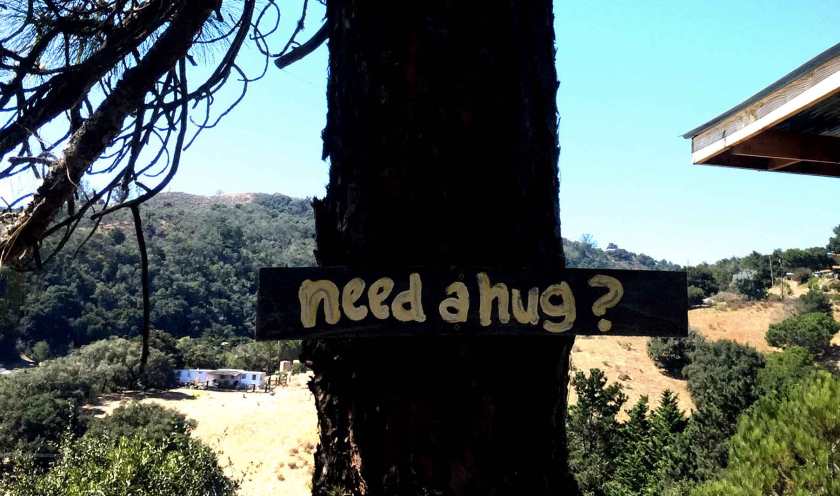 An invitation to seek more contact (whether it’s with humans or plants!) at The Lavra, California
An invitation to seek more contact (whether it’s with humans or plants!) at The Lavra, California
Retirement homes are places where we hide old people and wait for them to die because no one has time to take care of them anymore. They are marginalized away from society, their so-called wisdom and experience no longer « useful ». Family links break and stories are forgotten. Research shows that among older adults, loneliness is a predictor of functional decline and death. In the US, 43 percent of older people feel lonely. Some call loneliness a public health crisis. I believe that community living is a practical and joyful solution to that crisis.
« We are finally beginning to understand that just as it takes a village to raise a child, it takes a village to shepherd people through their golden years. » –New York Times article
In my ideal world -that i’m working on right now 🙂 , we would all be part of a synergistic community, whether small or big. We would benefit from a network of ultra-local transgenerational support. People on whom to count, but also on whom to exchange services and make life easier on a daily basis.
In a community, one can do different types of « work ». Being an active grandparent is a role to wish for every senior person. When you are retired and in good shape, you can easily pick up the kids after school, help them with their homework or participate in their games. Community living brings back youngsters and elders so people can grow and age confidently together. Kids are also just a great remedy against boredom, inactivity and death. At all ages, laughing, feeling useful and sharing tenderness are essential human needs.
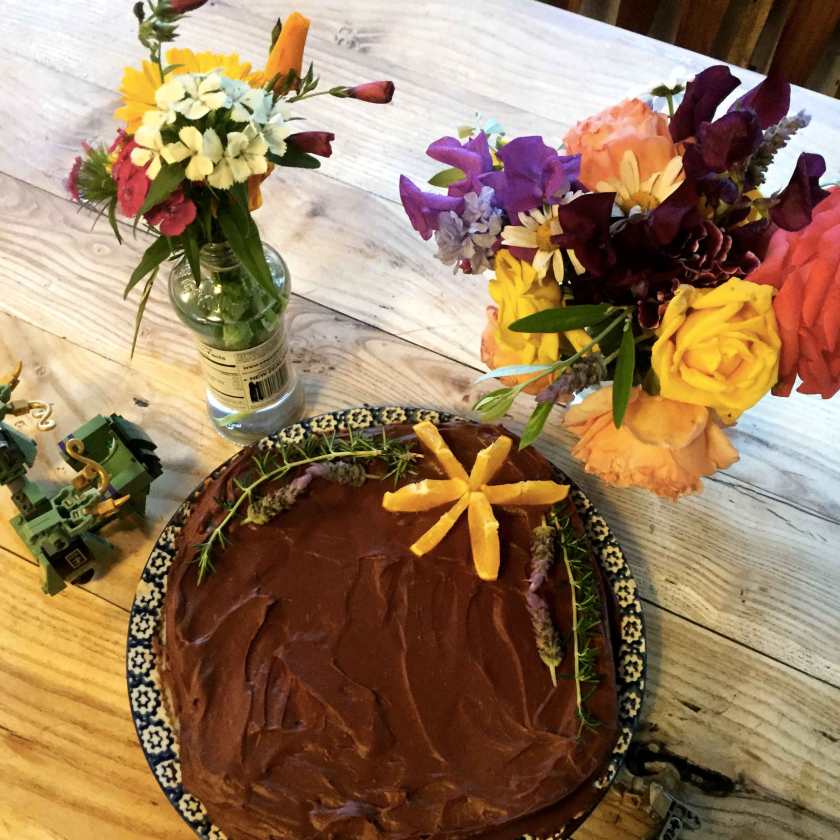 Birthday sweetness on the morning kitchen table in a community – Ojai, California
Birthday sweetness on the morning kitchen table in a community – Ojai, California
I think about all this because it is going to happen to me too! I’m going to be old, and my parents will too, and will not be able to live on their own. What will i do then? Have them come live with me? Help them find a community they would fit in? Or even help them create a community where they would want to retire?
Looking at those subjects now, i hope, will help me avoid considering retirement home as the only solution when the time will come. One hears more often about people being depressed rather than thrilled to live there 😦 And those places are furiously expensive (in the US it’s obscene…) Less and less olde people can afford to pay such rents. They end their lives lonely and in terrible conditions. We are economically segregated until death tears us apart.
But rich or poor, a retired person is someone who is rich in time. He/she can give and share it with others. Being in the situation of helping others, instead of always being the one to be helped, is crucial to developing true human connections and happiness.
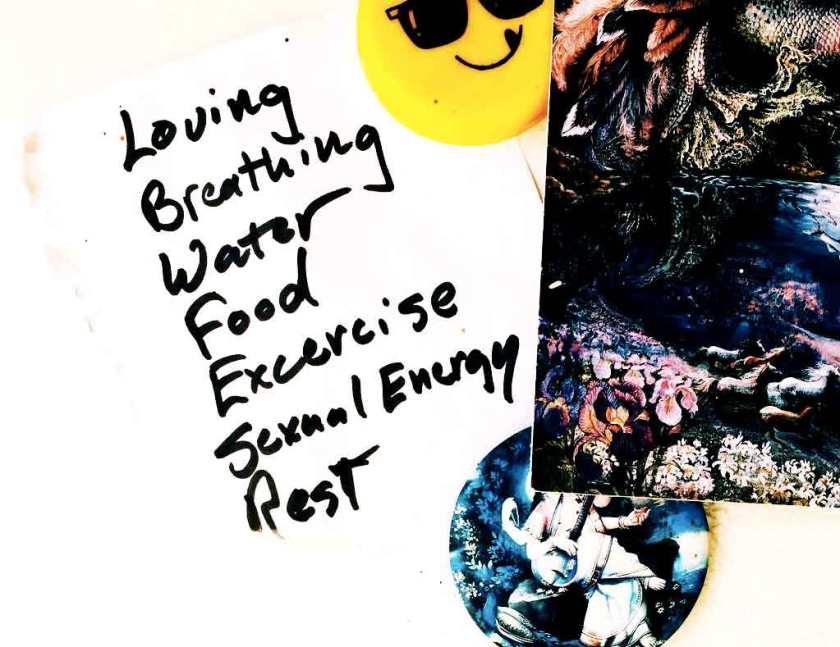 The daily to-do-list, Dreamweaver Sanctuary – Crestone, Colorado
The daily to-do-list, Dreamweaver Sanctuary – Crestone, Colorado
How to live in community?
This question is highly political, because when we live in a community we exchange much more than money. We exchange services, we share knowledge and we free ourselves from the vulnerability that the current economic system has locked us in. What Patrick Bouchain said about the constructions in the autonomous « zone to defend » (ZAD) of Notre Dames des Landes really resonated with me:
“Living in a shack is not being insecure, in the contrary it is being free and freeing ourselves from the insecurity that threatens us everywhere. » -(conference at design school ENSCI for the parution of the book Notre Dame des Landes ou Le métier de vivre : a description of the DIY cabins and layout of the ZAD by a group of architecture students and a photographer)
As many failed examples of communities teach us, self-organization IS hard. Self-governance is challenging since we are used to having our relations ruled by government, parents, police, school or work… When we visited the écovillage Sainte Camelle in France (ps: they are currently looking for people to join their community, check it out!), it was the main subject. It is extremely tough to hold a group of people together in the long run. Human balance is at the center of communities. I really think that those challenges invite designers at the « community design » table. We need to invent new tools, new process and new rituals in order to create stronger and healthier communities.
« Communities: they are not hippy playgrounds for kids who hate their parents. They are serious endeavors by committed activists who want to experiment with sustainable ways for humans to live together and look after the planet. » –Vice article
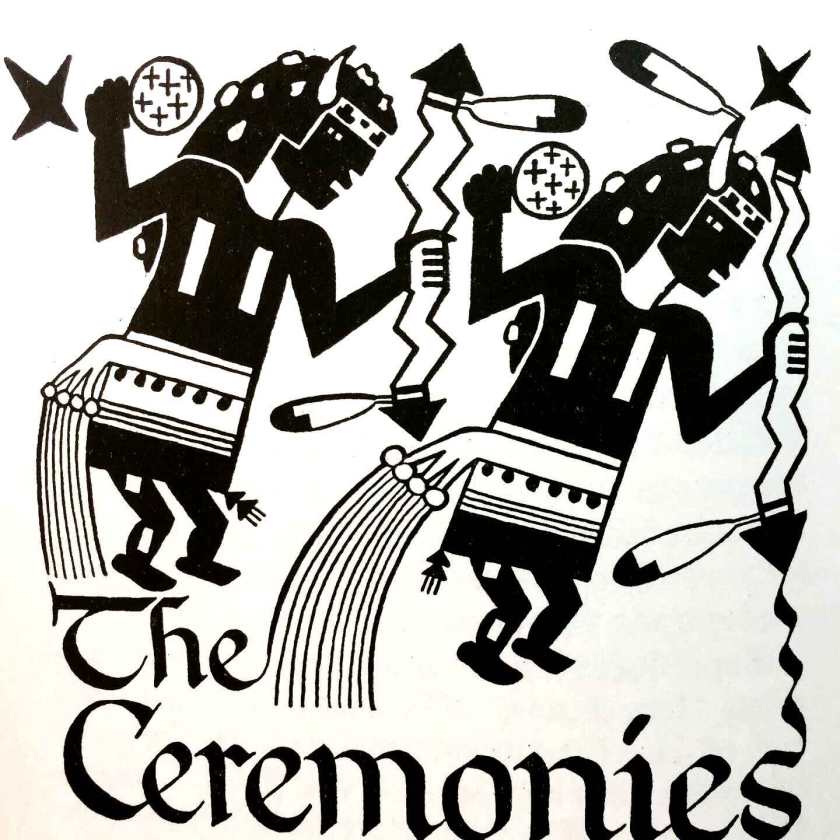 « The Hopi Indians, their history and their culture » by Harry James, illustrations by Don Perceval
« The Hopi Indians, their history and their culture » by Harry James, illustrations by Don Perceval
The word « community » means different things depending on cultures or countries. In France, people like to use the word « collective » better than community. At the Ecovillage Sainte-Camelle they insist on being called a collective, meaning that everyone is independent and has privacy. In the 1960’s, when communities were created in France, EVERYTHING has to be shared: house, property, drugs, husband or wife, children, paychecks, etc. A lot of those experiments failed because they were too extreme.
Communities that are created today have learned from those errors. First a community needs to share a common vision or goal, to write it down and to embody it through festivities, shared meals, meetings or ceremonies. The rules must be clear and transparent for all. And it is key that members of the community discuss subjects as: money, property, work, governance, conflict resolution and intimacy to make sure they’re on the same page.
Living in community intimately involves questioning one’s own limits, fears and desires. How much am I willing to share? How much private space do I need? How much control do I want to maintain?..
And instead of always thinking about what we could gain from living in a community, let’s think about what we can contribute to the community.
Peace,
❤
Where to find communities ?
- in the US : Foundation for Intentional Community
- in the world : Global Ecovillage Network (GEN)
- in France : Les Oasis Colibri
- in France : Ecovillage Global
- as worktrade exchange : NuMundo
More
-My article: Why live in a community 1/3
-My article: Why live in a community 2/3
– Episode « Monogamy », Netfilx serie « Explained »
–Episode on Intentional Communities from « Sustainable World Radio » podcast
-New York Times article « Grow Old Like ‘The Golden Girls’
-New York Times article « The New Generation of Self-Created Utopias »
-A very interesting blog: « All I Want for Christmas is a new world »
-Vice article: « Touring the World’s communes »
-Vice article: Arcosanti, a utopia in Arizona
-The book: « Community Living » by Bill Metcalf


Une réflexion sur “Why live in a community 3/3”